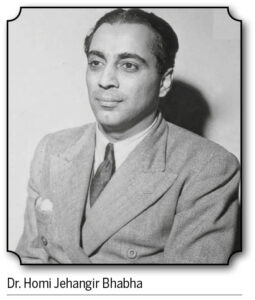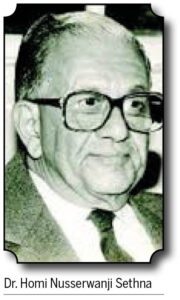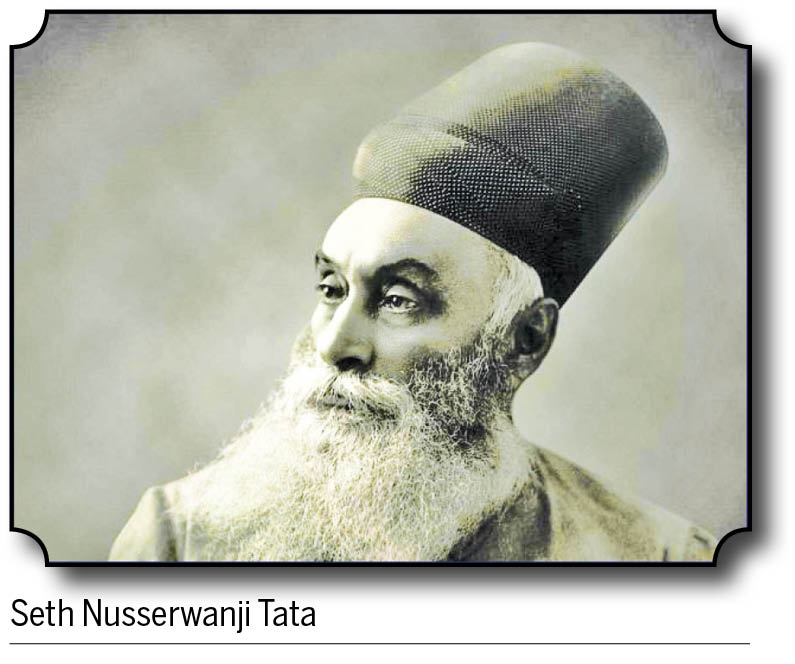Parsi Times presents a 5-part series on the entry, settlement and rise of the Parsi community in India, by Adil J. Govadia
 The Parsis, having migrated to the hospitable shores of India in search of a peaceful existence and freedom to practice their own religion, adapted to the Indian ways and proved themselves no less than their Hindu hosts in their devotion to their country of adoption! Parsis distinguished themselves in every sphere of public activity, be it politics, business, philanthropy, reforms, scholarly pursuit and industry.
The Parsis, having migrated to the hospitable shores of India in search of a peaceful existence and freedom to practice their own religion, adapted to the Indian ways and proved themselves no less than their Hindu hosts in their devotion to their country of adoption! Parsis distinguished themselves in every sphere of public activity, be it politics, business, philanthropy, reforms, scholarly pursuit and industry.
The community’s receptiveness to scientific and engineering knowledge is well-known. In 1844, when civil engineering course was introduced for the first time in Bombay’s Elphinstone College, three Parsis – Seth Naoroji Framji, Seth Nusserwanji Chandabhai and Seth Kaikhusru Fardunji, were the first to receive civil engineering degree in 1847. Likewise, two outstanding scientists of modern India are the legendary Dr. Homi Jehangir Bhabha – the Father of Indian Atomic Energy Research who was also the founding director of the Atomic Energy Establishment, now named the Bhabha Atomic Research Center.
The other renowned scientist was Prof. Darashaw N. Wadia, the distinguished geologist who not only explored the massive expanse of the Himalayan range but also established the first modern school of geology and geophysics in India. In 1959, Prof. Wadia also proposed and helped the Indian Government to establish the International Oceanic Expedition. He was awarded the Padma Bhushan in 1962 and was the first Indian to be appointed the National Professor in Geology.
 Dr. Nanabhoy Ardeshir Faramji Moos was another outstanding geologist of repute, having earned two Gold Medals in 1886 for his BSc degree from Edinburgh University, in agriculture as well as veterinary science. He pioneered the field of electromagnetism in India and also founded two observatories – the Albaugh Observatory, established close to Bombay in 1904 and the other at Manora in Karachi.
Dr. Nanabhoy Ardeshir Faramji Moos was another outstanding geologist of repute, having earned two Gold Medals in 1886 for his BSc degree from Edinburgh University, in agriculture as well as veterinary science. He pioneered the field of electromagnetism in India and also founded two observatories – the Albaugh Observatory, established close to Bombay in 1904 and the other at Manora in Karachi.
Likewise, Dr. Kaikhasru Nusserwanji Bahadurji was the first Parsi to attain double degrees of MD and MRCP with honours from London. Born to a humble family, this brilliant student of medicine unfortunately died young at age 38 years. Even so, he established a ‘Parsi Fever Hospital’ in Bombay that rendered free medical service to the needy. Dr. Bahadurji was an active member of the Bombay Municipality, much loved and admired by all.
In 1974, when the first Pokhran nuclear test was conducted, Dr. Homi Nusserwanji Sethna, a chemical engineer and a nuclear scientist, gained international fame as Chairman of Indian Atomic Energy Commission. The central figure of India’s civilian nuclear program as well as the construction of nuclear power plants, he was awarded the Padma Vibhushan in 1975.
In 1922, Sir Rustom P. Masani was the first native Indian to become Municipal Commissioner of the Bombay Municipal Corporation, followed by Sir Ardeshir Rustomjee Dalal, KCIE, who was knighted in 1939, and worked with Tata Group for almost 14 years, till his demise in 1949.
Nagpur’s Khan Bahadur Sir Bejonji Dadabhai Mehta was one of Seth Jamshetji Tata’s most trusted business associates. A self-made visionary with humble beginnings, Sir Bejonji was a towering personality with rare qualities of integrity, intelligence and far-sightedness. In 1876, he was the first native Indian in the Great Indian Peninsular (GIP) Railway service to be appointed as ‘Goods Agent’, around the same time that Seth Jamsetji Tata established his first flagship venture (The Empress Mills), in Nagpur.
Sir Bejonji’s services were first recognized and rewarded by the title ‘Khan Bahadur’. Subsequently, in 1912, King George V, while on a train journey passing through Nagpur, bestowed knighthood upon Khan Bahadur Bejonji in his railway saloon (compartment). He was the first Parsi from Nagpur to be Knighted in 1912, besides his son Sir Sorabji B. Mehta (Knighted in 1920) and Sir Maneckji Byramji Dadabhoy (Knighted in 1937). In 1997, the fourth Nagpur Parsi – Padma Bhushan Dr Sir Jamshed Jijibhai Irani, former Managing Director, TISCO, was conferred Honorary Knighthood by Queen Elizabeth II. The unique investiture ceremony of Sir Bejonji was rather simple and took place during the transitory period of the train’s stop at Nagpur station!
Sir Maneckji Byramji Dadabhoy, a brilliant lawyer, industrialist, and political figure, was the founder Chairman & Managing Director of the Nagpur Electric Light & Power Company Ltd. In 1887, at age 22, he was elected member of the Bombay Corporation and went on to serve as Member, Nagpur Municipal Board for 40 long years. In 1891, he served as the Government’s Advocate for Central Provinces and from 1920-32, functioned as the Governor of the Imperial Bank of India. In 1955, recognizing his valuable services, Dr. Radhakrishnan, the then Vice President of India, unveiled Sir Maneckji’s marble bust and a portrait in Nagpur.
 The Guzder family was the most trusted business associate to the House of Tatas for almost 150 years. Their business endeavours started in mid-19th century, when in 1864, the Emperor of Abyssinia (present day Ethiopia) jailed the British Resident and several other Englishmen, prompting the British Empire in India to strike Abyssinia. Consequently, Seth Framji Guzder (great-grandfather of Seth Jimmy N. Guzder, former President of the Bombay Parsi Panchayat) was invited by Seth Nusserwanji Tata – father of iconic Seth Jamsetji Tata, to assist him in transporting various supplies for the commissariat to be delivered at Bombay Port. Thus, were sown the seeds of a longstanding association between the House of Tatas and the Guzder family, which continued uninterrupted for almost 150 years (Ref. Jamshed Nusserwanji Guzder’s autobiography titled ‘Short Stories from a Long Life’).
The Guzder family was the most trusted business associate to the House of Tatas for almost 150 years. Their business endeavours started in mid-19th century, when in 1864, the Emperor of Abyssinia (present day Ethiopia) jailed the British Resident and several other Englishmen, prompting the British Empire in India to strike Abyssinia. Consequently, Seth Framji Guzder (great-grandfather of Seth Jimmy N. Guzder, former President of the Bombay Parsi Panchayat) was invited by Seth Nusserwanji Tata – father of iconic Seth Jamsetji Tata, to assist him in transporting various supplies for the commissariat to be delivered at Bombay Port. Thus, were sown the seeds of a longstanding association between the House of Tatas and the Guzder family, which continued uninterrupted for almost 150 years (Ref. Jamshed Nusserwanji Guzder’s autobiography titled ‘Short Stories from a Long Life’).
Initially, Seth Nusserwanji Tata and Seth Framji Guzder formed a partnership firm called M/s Pestonji-Sorabji & Company (‘Pestonji’ representing the Tata family and ‘Sorabji’ being Seth Framji Guzder’s son and Seth Jimmy N. Guzder’s grandfather) which did clearance and transportation of all equipment required for Tata’s first venture at Nagpur’s Empress Mills. Over the years, the company name however changed to M/s N.S. Guzder & Company, named after Seth Framji Guzder’s grandson, Seth Nusserwanji Sorabji Guzder who continued the family legacy, while the Tatas continued to retain a small percentage of the partnership in the firm. It was only in 1922 that the Tatas amicably decided to withdraw from the partnership of M/s N.S. Guzder & Company, after Seth Jamshed Nusserwanji Guzder joined the business at age 18 years.
- જેજે હોસ્પિટલના પારસી વોર્ડમાં નવરોઝની ઉજવણી - 5 April2025
- ઝોરોસ્ટ્રિયન વિમેન્સ એસોસિએશન ઓફ સુરત દ્વારા પાણી બચાવો પર્ફોર્મન્સ - 5 April2025
- આવાં યઝદના પરબની ઉજવણી - 5 April2025
